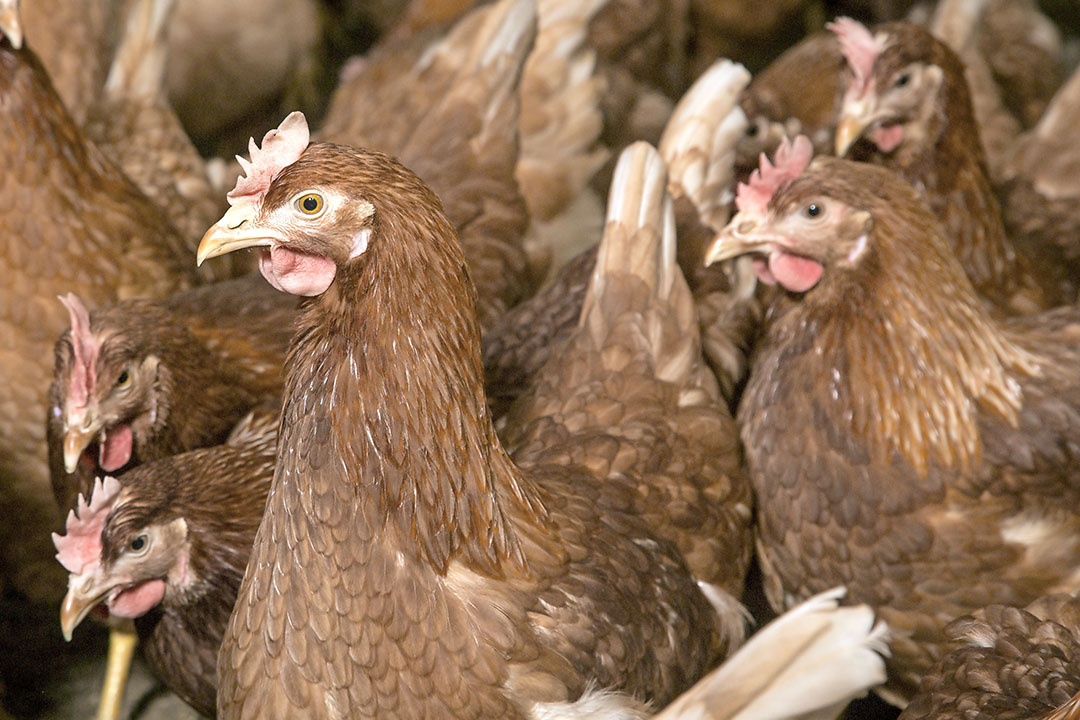Digestibility of extensively hydrolysed poultry feather meal

Extensively hydrolysed poultry feather (EHPF) is used in diets of aquatic species to promote intake and growth and in dog and cat nutrition to enhance diet palatability. However, little is known regarding its digestibility in monogastric farm animal species, particularly in poultry.
One animal by-product that is typically used in animal diets is Poultry By-Products Meal (PBPM), which is made up of unmarketable slaughterhouse trimmings of poultry meat and carcass that is usually devoid of feathers, offal and blood. Because of the nature of PBPM, in which trimmings and whole carcasses can be found, the proportion of meat and bone may vary, resulting into a less stable nutrient content in the final product.
Digestibility of feathers
Feathers represent a large proportion of waste products in poultry production. It is almost impossible to degrade feathers in the digestive tract because it is largely composed of the protein (β-) keratin, which is generally indigestible, if it is not processed with physical and chemical modifications e.g., autoclaving. Feathers can be converted into feather meal (FM) when processed in this way. Protamine (BCF Life Sciences, Inc.) is a different product that is produced by an intricate process of acid hydrolysis of feathers; it is in fact an Extensively Hydrolysed Poultry Feather (EHPF). The aim of this innovative process is to produce a product with a very high nutritional value, with high amino acid content (> 80 %) and high digestibility.
A study was conducted atthe ADM Research Facility in Saint-Nolff, France, from January to February 2017 in order to determine the protein and amino acid digestibility of EHPF in caecectomised cockerels and compare it to the other regularly used poultry production by-products, FM and PBPM. It also verified whether lanthionine content from feather-based by-products could be an indicator of amino acid digestibility, comparing the effect of the various processes used.
Also interesting: Feather meal – A useful addition to fish feed
Study method
A sample of 18 adult ISA brown cockerels were used. The birds were caecectomised in order to remove any interference with the measurement of amino acids digestibility due to fermentation of the microbiota which mainly takes place in the caecum. The birds in the experiment were housed in metabolism cages in a thermo-regulated room. The cages were fitted with individual collection trays for excreta. Birds were exposed to 12 h of light each day.
Each bird was randomly allotted to one of the 3 experimental diets:
- EHPF,
- FM or
- PBPM.
A sample of each protein source was set aside for analysis. The diets were a mixture of sugar (56g) and protein (24g). Sugar did not affect the product’s digestibility and was added to dilute nutrients in the diet. Water was available ad libitum. To measure digestibility, the experimental design known as the Sibbald method was followed.
Digestibility results
The digestibility results are included in Figure 1. It was found that EHPF had higher nitrogen digestibility (99.6%) than both FM (83.5%) and PBPM (89.7%).The same hierarchy is established with the ileal digestibility Boisen values. But the more accurate results are obtained with amino acids digestibility, which highlights the fact that Boisen digestibility overestimates FM digestibility. Indeed, the total digestibility of AA (dTAA) of EHPF was very high (97.0%) compared to the dTAA of FM (72.1%) and PBPM (88.3%), as shown in Table 1.
This trend was also true for the digestibility of both essential (dEAA) and non-essential (dNEAA) amino acids, where EHPF generally had the highest digestibility among the 3 sources, followed by PBPM, while FM had the lowest. The dEAA of EHPF was 98.1%, while FM reached 78.7% and PBPM 89.7%. The digestibility of protein and amino acids are close or in agreement with the findings from previous experiments that fed crystalline amino acids, FM and PBPM. There was no direct comparison with EHPF, but regarding its composition, it may be comparable to a diet whose protein is mostly made up of free amino acids.
Looking further at the digestibility of the specific amino acids measured in this study, all had at least 90.5% digestibility (digestible Cystine value) in EHPF, compared to the 51.1% digestibility of Asp (dAsp) as the least digestible amino acid in FM. For PBPM, the lowest digestibility was observed with dAsp at 76.6%. Digestibility values suggest that the AA digestibility of PBPM is higher than FM, which is in agreement with published studies but is still lower than the digestibility of EHPF. Lanthionine concentrations were lower for EHPF (0.36%) compared with FM (2.32%).
Also interesting: Feather meal a good source of energy for pigs
Conclusion
We can conclude that the in vivo digestibility of amino acids of EHPF (Protamine) is much higher than the traditionally used FM (+ 24.9 points) and PBPM (+ 8.7) and consequently, non-digestible amino acids are 3% lower than FM (27.9%) and PBPM (11.7%). This is important to emphasise because indigestible amino acids can often cause digestive disorders. The use of lanthionine concentrations in the products is confirmed to be a good predictor of digestibility and the quality of processing applied to the feathers. The use of EHPF in animal diets should be considered for further studies in view of the fact that the product is highly digestible by adult cockerels, an animal model currently used for raw materials digestibility measurement. Protamine has higher digestibility than other poultry by-products used in this experiment and, due to its nature, it may be used as a high-quality protein and a source of amino acids. It would be interesting to use it at specific stages of life, where a high level of bioavailability of proteins is required (i.e. first day of life, weaning). Other applications as a specialty protein source for all breeding or pet animals, dedicated to hoof or foot pad reinforcement (related to its AA profile close to keratin) can be considered.
Author:
Francis Amann Eugenio and Joël Duperray, BCF Life Sciences, France, Cécile Picart, ADM France











